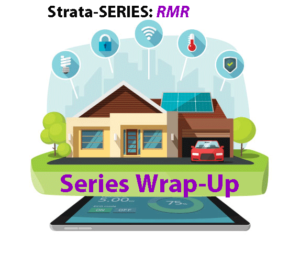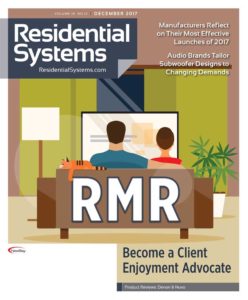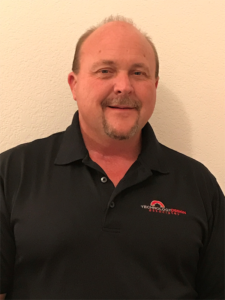 One month ago, on December 6th, Strata-gee launched a series of articles on recurring monthly revenue (RMR) programs based on research conducted for a cover story in the December issue of Residential Systems Magazine. That Series, called Strata-SERIES: RMR, ran the entire month of December and into January with a total of five posts of content, plus an additional Series introduction and this Series wrap-up.
One month ago, on December 6th, Strata-gee launched a series of articles on recurring monthly revenue (RMR) programs based on research conducted for a cover story in the December issue of Residential Systems Magazine. That Series, called Strata-SERIES: RMR, ran the entire month of December and into January with a total of five posts of content, plus an additional Series introduction and this Series wrap-up.
What did we learn about RMR? Much! Read on…
I’ll be the first to admit that prior to the Residential Systems assignment, I did not have a deep and nuanced understanding of the issues surrounding the RMR business. Like many, I thought it was just some way to wheedle more money out of clients. It turns out that while a new revenue stream is part of the benefit of a well-conceived and executed RMR program, the bigger picture is that it holds an entire roster of benefits. Most importantly – it drives a new and deeper relationship with the client.
Mega-trend forces are converging to drive more integrators to adopt some form of RMR program. These forces will continue to build momentum and I believe we’ll see the adoption of RMR programs by integrators increase over the next five years or so.
 The fact is, our Strata-SERIES: RMR is but an overview to this incredibly deep subject. But, here are some of the key findings that we presented in this series.
The fact is, our Strata-SERIES: RMR is but an overview to this incredibly deep subject. But, here are some of the key findings that we presented in this series.
-
- Low Penetration Means High Opportunity – In our first installment, I mentioned how my research got off to an inauspicious start, as the first integrators that I reached out to were not engaged in RMR:”Surprisingly, the first four integrators we spoke with had either never offered any kind of RMR program…or they had tried a program and ended up dropping it…or they had an existing program, but it was not particularly successful. Most of them expressed frustration over their RMR efforts, or resignation that RMR was just not working out. With this being the case, none of them wanted to be quoted as part of this story.In doing some research, I discovered that penetration for RMR programs is pretty low…about 29% according to CEDIA’s Dave Pedigo. Anecdotally, some in the industry estimated in the 30-40% range overall. Although lower than expected, this low penetration can mean there’s a high opportunity for integrators to enter this segment, taking leadership of the category in their markets.
-
- A New Business Model: Stop Thinking Tech, Start Thinking People – “I didn’t get into the technology business…to sell insurance,” one of the integrators angrily, when I asked why he was not offering an RMR program. He spoke a version of what many of the RMR naysayers told me. But in fact, those successful with RMR have, in many respects, redefined their businesses in a new and exciting way.Instead of a business of selling and installing technology products on a serial project basis, they look at themselves as a Technology Manager or – as Residential Systems put it in a headline on the cover of their December issue: Becoming a Client Enjoyment Advocate. Their businesses are not conducting a series of installation projects, rather they are engaged in a process of expanding ongoing lifetime relationships with an ever-growing sphere of clients.Yes, many of us got into this business because of our love of technology, but our future may be inextricably tied to a focus NOT on the technology itself, but rather on helping our clients fully ENJOY that technology over the long haul.

Chris Smith
Cloud9 Smart - Converging Forces Driving RMR Adoption – There are many forces that are converging to drive greater adoption of some form of RMR programs by integrators. Whether you call it a service contracts, or maintenance agreement, or Client Care package – whatever title you choose, we identify 7 key industry trends driving custom integration companies to the conclusion that the old “break-fix” model no longer works. Ongoing maintenance, often done remotely, is critical to keeping installations operating to the expectation of the client.
- Assume the Sale, Refuse Alternative Arrangements – There is no more brutal, competitive marketplace than Manhattan, NY. Chris Smith of Cloud9 Smart, says one of the keys to their success with RMR is to assume it is to be part of every installation. Package it in the proposal and make it clear that if the client doesn’t want a contract…that’s fine, but you won’t service the system.Cloud9 Smart gives the first six months free and Smith says the company is nearly 10 out of 10 for signing-up clients to extensions. As more consumers warm up the the idea of ongoing maintenance to keep their systems running optimally, this becomes less of an issue at contract signing time. “If you’re not doing it [RMR] today…why not,” Smith asks rhetorically.
-

Ben Lentz
Cyber Technology GroupRevenue is Not the Goal – Several of the integrators I spoke with told me that revenue was not their motivator, or at least not the main goal, of their decision to pursue an RMR program. Typical of this thinking, Ben Lentz of Cyber Technology Group, said of their decision to pursue RMR – “…we were just trying to re-educate the marketplace that these systems actually need maintenance.”Like many integrators, CTG gave away a lot of free service to clients when they completed their projects, switching to a break/fix model after some warranty period had passed. But providing free service was getting very expensive, and when out of warranty, clients were unwilling to pay the true cost of providing ongoing service. Something had to change, and so they rolled out their Client Care Plan.
One benefit to on-site “wellness” visits to check up on and provide maintenance to the client’s systems every six months or so, was that the CTG tech found a client open to talking more about options, upgrades, and new technology. This is not usually the case, when a tech was there to fix a broken system.
CTG techs, Lentz told me, sell a lot of system upgrades on these visits.
- A New Business Model: Stop Thinking Tech, Start Thinking People – “I didn’t get into the technology business…to sell insurance,” one of the integrators angrily, when I asked why he was not offering an RMR program. He spoke a version of what many of the RMR naysayers told me. But in fact, those successful with RMR have, in many respects, redefined their businesses in a new and exciting way.Instead of a business of selling and installing technology products on a serial project basis, they look at themselves as a Technology Manager or – as Residential Systems put it in a headline on the cover of their December issue: Becoming a Client Enjoyment Advocate. Their businesses are not conducting a series of installation projects, rather they are engaged in a process of expanding ongoing lifetime relationships with an ever-growing sphere of clients.Yes, many of us got into this business because of our love of technology, but our future may be inextricably tied to a focus NOT on the technology itself, but rather on helping our clients fully ENJOY that technology over the long haul.
- Competitive Advantage – Like CTG’s Lentz, Ron Wanless of Technology Design Associates (TDA) had an ulterior motive for pursuing an RMR program – he was trying to cut company overhead by reducing truck rolls to service client’s systems. Says Wanless, as he explained why they crafted an RMR program, “It was actually the ability to limit my truck rolls to a client’s house. Despite the fact that I like the effect of billing my clients for stuff, the objective is – truck roll service calls typically lose money, you spend more than you can bill for.”

Ron Wanless
Technology Design AssociatesIt took a lot of trial and error for Wanless to arrive at a program that hit the sweet spot of being low cost enough to motivate client adoption, while offering a stream of revenue to offset costs. But perhaps the biggest advantage to the Client Care Program TDA designed was being able to bill clients for remote monitoring and maintenance services. Wanless says they successfully cut truck rolls by 82%!
Finally, Wanless, like many of the integrators I spoke with, said that his program now is actually a competitive advantage in the eyes of many potential clients. They like the idea of ongoing working with an integrator that will be there to offer ongoing, after-sale system support.
- With Monthly Maintenance & After Hours Support, ‘I Got My Life Back’ – Matt Walin of Brilliant AV has operated for years with a pretty traditional approach to integration – selling and installing stuff. Then: “We began to realize, as we kept getting calls for service needs, that there’s an opportunity here.” But as he investigated the costs of ramping up a full-fledged service operation, including offering 24/7 after-hours support, Walin couldn’t figure out how to make the numbers work.

Matt Walin
Brilliant AVAlthough he attributes some of this to the onerous labor laws of the State of California, the fact is, it can be a signficant investment for integrators, especially if they don’t already have a service staff. Walin’s solution was to work with a turnkey solution from OneVision to handle all of the complexities of offering ongoing service.
And one benefit of transitioning from a break-fix model, to an ongoing system monitoring and maintenance model is, fewer service calls and – in his case – an outsourced help desk: “I got my life back. Now all the after-hours phone calls go to the help desk.”
That’s a Wrap!
I’ve enjoyed bringing this series to Strata-gee readers, and a big shout-out of THANKS to Jeremy Glowacki and Residential Systems for letting us expand this content here.
Bottom line: integrators should be taking a very serious look at offering an RMR programs. Done correctly, an ongoing maintenance agreement with your clients is good for them, good for you, and helps to create your own in-house pool of demand as technology changes down the road.
And that is something that we all know is inevitable – technology is always changing – and always outpacing your clients ability to grasp the significance of. With an ongoing maintenance RMR program, you’ll be right there to help them choose the best options for them.

Strata-SERIES: RMR is an expanded series of articles based on my research for the cover story commissioned by Residential Systems for their December issue. Check out the original article here…or visit the Residential Systems home page here for many other great stories…





Leave a Reply